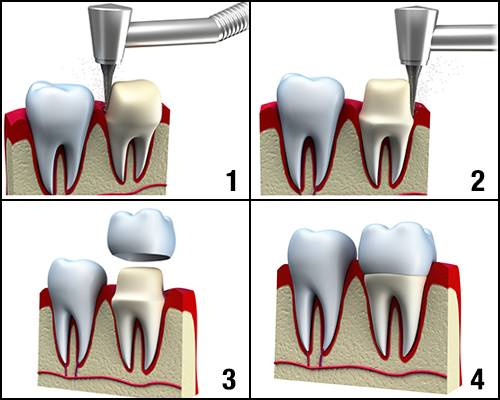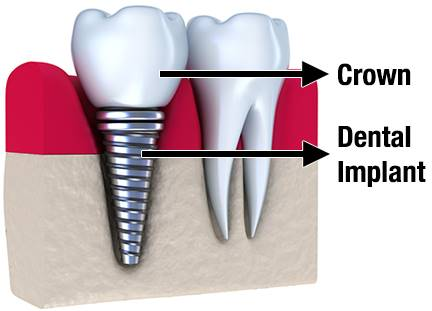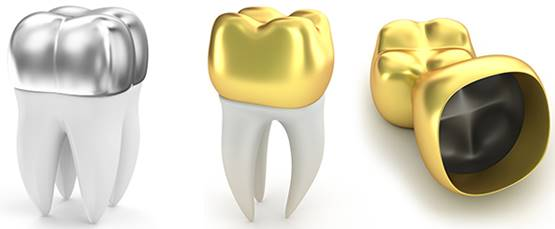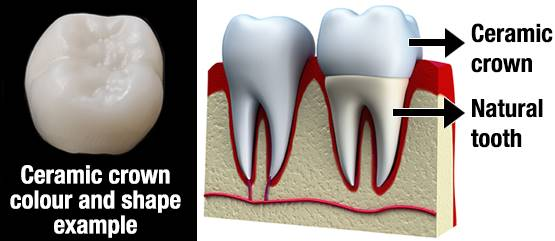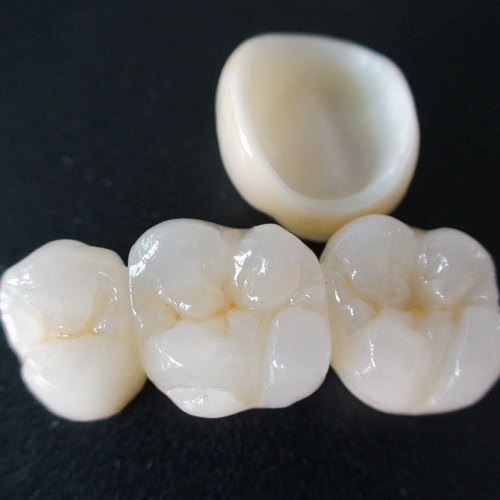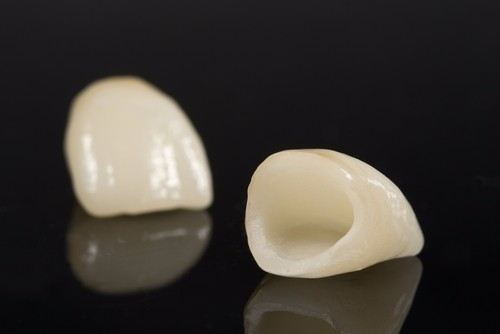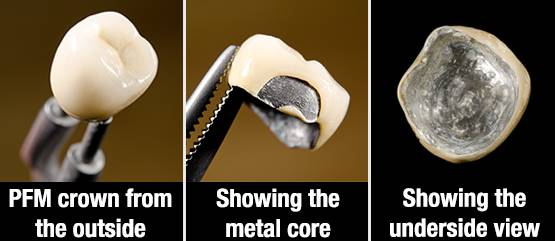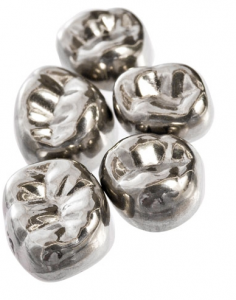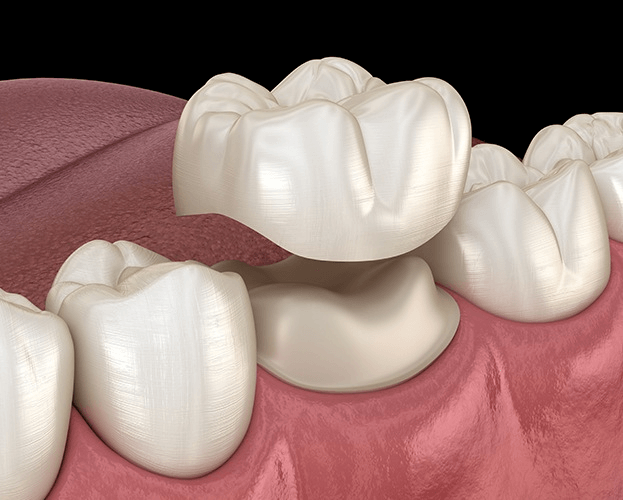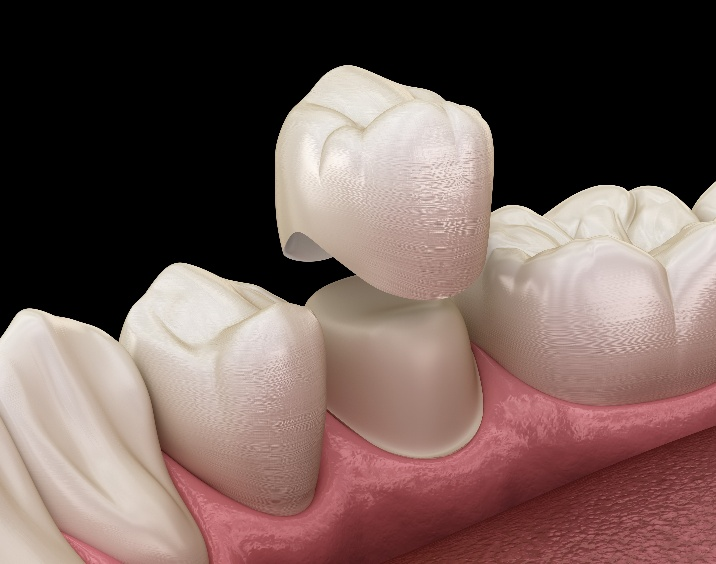Porcelain-Fused-To-Metal Crowns :
PFM crowns are made up of two chemical components. Their core is made of metal alloys (metal alloys to be specific, which you can read more as "all-metal crowns"). This is actually the the inside portion, also known as the 'substructure,' which rests around and is cemented to the organic tooth. Porcelain (a type of ceramic) is then layered over and bonded to the metal base to crown its tooth-like shape and color.
In a way, a PFM crown gives both worlds the best for strength and aesthetics, which means they are a reasonable choice for either front teeth or back teeth. Next is all-metal crowns; they are the second most long-wearing choice. The metal structure is very hard and durable and can be acidly etched, unlike Zirconia cores, for strong adhesion and bond to the natural tooth.
The porcelain that is layered over metal to make up the crown's visible portion makes a very attractive, lifelike result matched to the natural teeth color. PFM caps also provide excellent biocompatibility properties.
After in line to all-ceramic caps, PFM crowns many carefully resemble natural teeth. However, there is still a big difference in similarity because, compared to a full-ceramic crown, PFM crowns are almost non-transparent and translucent. The way all-ceramic looks so lifelike is by imitating how light passes through and is reflected off a natural tooth by using very translucent porcelain.
Since the metal core structure of a PFM crown is really black, it needs to be covered in really opaque porcelain to mask to ensure that none of the metal colors shows through. Therefore only a comparatively thin layer of translucent light illuminating porcelain can fit on the top, which reduces the ability to mimic the lustrous look of a natural tooth truly.
Some other shortcomings of PFM crowns are that the underlying metal can show through as a dark line over time, especially as the gums recede. The varieties of porcelain used are also quite abrasive than all ceramics and can wear down an opposing group of teeth. The major risk or shortcomings with PFM crowns is that the porcelain layer can fracture or chip off, leading to infection and failure if not treated appropriately by a dental surgeon.


